Colours and corals of the Maldives
With sea levels reportedly rising by one-two inches per year because of global warming, there’s a strong possibility that many of the 1,196 islands constituting the Maldives may disappear underwater in the near future. Advice to adventurers: visit sooner than later
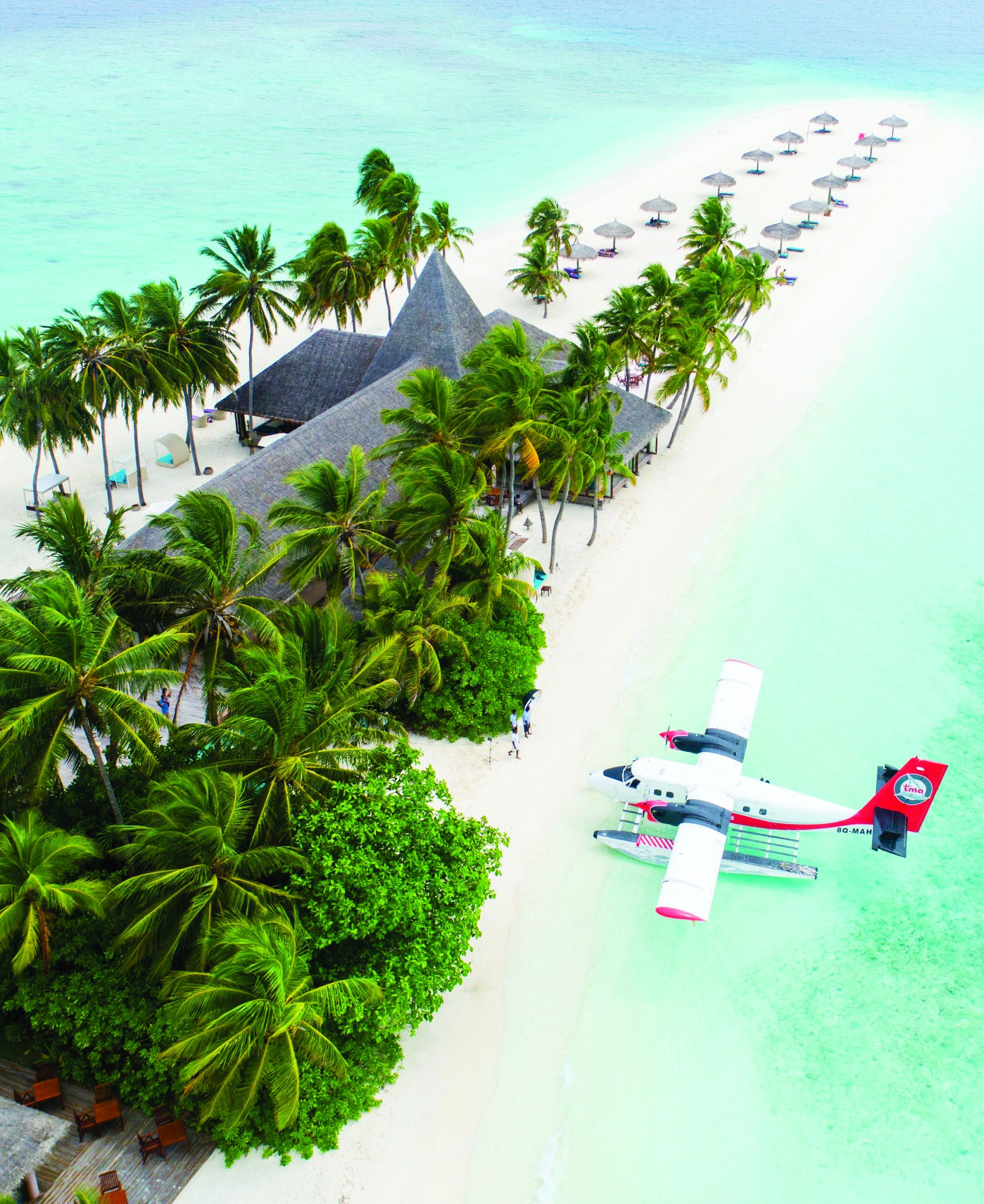
If you are a member of the growing tribe of adventurers worldwide interested in checking out the least explored domain on planet Earth — exotic flora and fauna beneath the oceans which cover two-thirds of the world’s surface — a good option is the Islamic Republic of Maldives (pop. 515,696). With sea levels reportedly rising by one-two inches per year because of global warming which is steadily melting the polar ice caps, there is a strong possibility that many of the 1,196 islands and atolls constituting the Maldives may soon disappear underwater. Therefore, for adventurers keen to experience the indescribable colours and coral reefs of the Maldives — a mere half hour’s flight from Thiruvananthapuram — the advice is visit sooner than later.
A garland of emerald islands scattered across the Indian Ocean, tourism and hospitality is the republic’s premier industry. Last year an estimated 555,494 tourists from around the world checked into the 87 island resorts of the Maldives, described by legendary traveller Marco Polo as the “flower of the Indies”.
Local people refer to the Maldives as dhivehiraajje which translates into “the island kingdom”, but ancient traders from India referred to it as Maladiv — the Sanskrit term for ‘garland of islands’ — and through Portuguese this name was adopted by other European languages. The natives describe themselves dhivehin, meaning “islander” and speak their own unique Dhivehi language.
The formation and history of the Maldives is shrouded in mystery. How exactly this exquisite chain of islands surfaced is unclear, as is the total count of how many islands constitute the republic. Estimates place the figure at 1,196, divided into 26 natural atolls, though it’s impossible to arrive at an exact number because with the rise and fall in ocean levels, some islands disappear beneath the sea and resurface, and some even split into two or more parts. However of the 1,196 islands only 202 are inhabited.
The unique feature of this archipelago is the harmonious relationship of its people with their environment. Maldivians deeply respect nature, revering it as their source of life and livelihood, while being well aware that nature can be a capricious and volatile force with astounding powers to bless or destroy. Maldivians are learned about climate and weather and adapt their fishing, farming and sailing programmes accordingly. They have developed their own complex calendar based on the study of stars and waxing and waning of the moon. The year is divided into seasons called nakaiy, the word having its origins in the Sanskrit word nakshatra meaning star or heavenly body.
A string of tropical islands blessed with clear waters and exotic fish living off its coral reefs, the Maldives is hot and humid for most of the year. Temperatures are usually in the thirties and rarely drop below 260C. Refreshing sea breeze however, makes the weather very pleasant for the better part of every day. The year is divided into two main seasons according to the monsoons; the north-east blows feebly from November to April, when after some strong squalls the sky turns an unbelievable blue and the sun shines from 6.00 a.m to 6.00 p.m. The wet south-west monsoon blows more strongly from May to November.
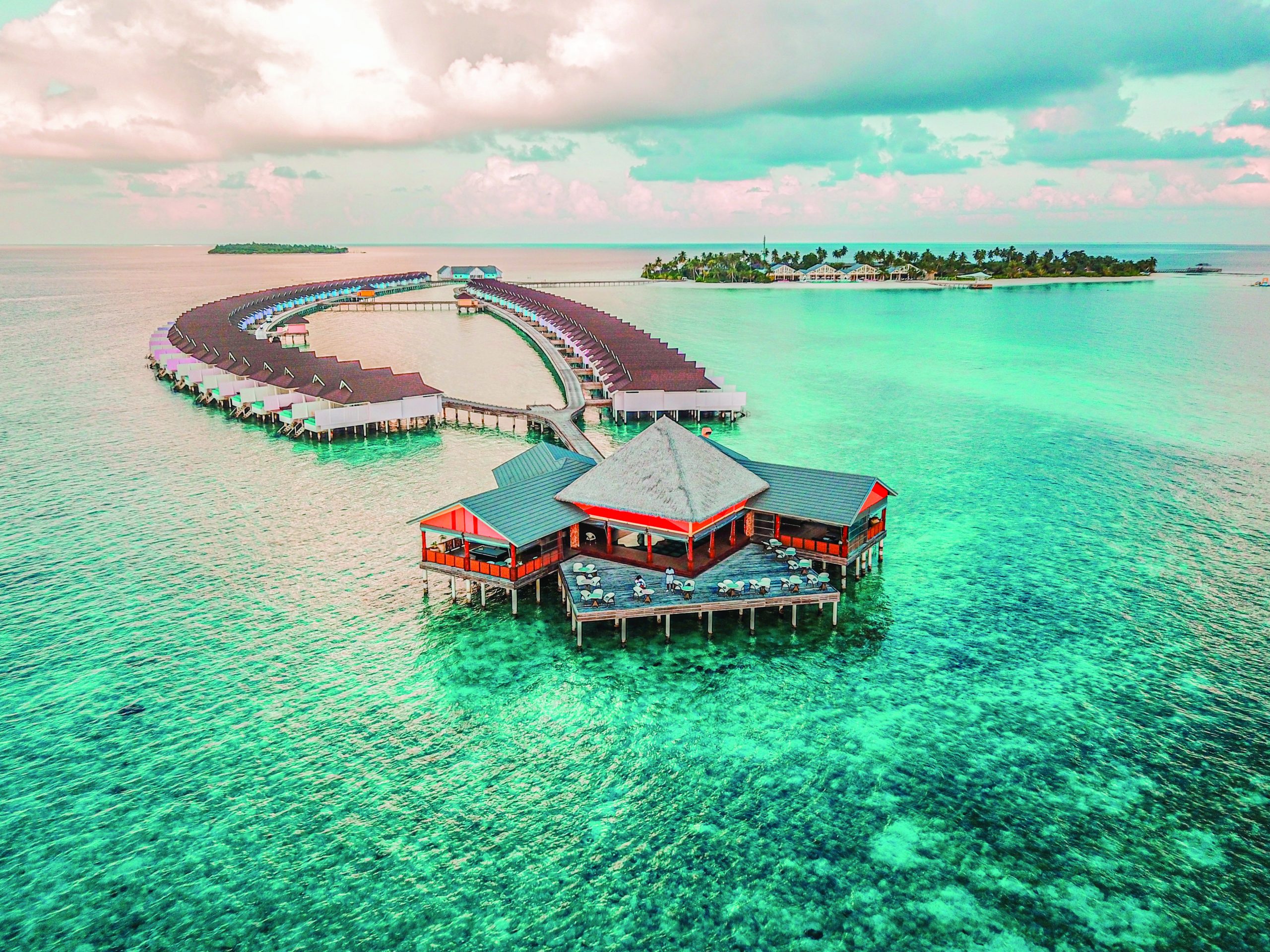
A globally-renowned mecca of beach tourism, somewhat paradoxically the republic is a conservative and deeply religious (Islamic) nation. Visiting Arab traders introduced Islam to the Maldives in 1153-54 AD, and it was an Arab who converted the Buddhist king Theemugey Maha Kaliminja to the revealed religion. Legend has it that a Muslim trader Abu al Barakaath won over the people by exorcising a demon god Rannamaari who emerged from the sea every full moon night, demanding the sacrifice of a young virgin. The king was so impressed that he converted and persuaded his subjects to follow suit. A more political interpretation of these events is that local rulers converted to Islam because they realised that they would be unable to hold Buddhist Sri Lanka at arm’s length without the support of powerful Islamic regimes in South India and the Indian Ocean rim.
Tourism, which has brought prosperity to the Maldives is a relatively new industry in this tiny country. The first tourists arrived here in 1972 when an Italian operator opened up a resort village on the island of Kurumba in Male, the tiny capital of the Maldives. The seat of government and centre of trade, commerce, business, health and education, Male is constantly buzzing with the sounds and activities of its 227,486 people who make up almost one-third of the population of the republic. Quaint, and densely populated, Male nevertheless boasts clean and tidy streets with mosques, markets, a maze of tiny alleys, all with their own peculiar charm.
One of the tiniest national capitals (1.7 sq. km) worldwide, Male is too small even to accommodate the chartered jets that bring tourists to the country. Its airport is on the neighbouring island of Hulhule. This long, thin stretch of land serves the function of a natural aircraft carrier permanently anchored in the sea. At the jetty contiguous to the airport, motorised launches wait to disperse tourists to Male and the surrounding island resorts.
Apart from the sea, beaches and water sports, Male has a few modest tourist attractions including the National Museum, which houses untidy exhibits of the sultans’ possession and a smattering of legendary explorer Thor Heyerdahl’s archaeological discoveries — many of the ancient stone carvings and figurines are featured in his book The Maldive Mystery. Contiguous to the museum is the scenic Sultan Park. Also worth visiting is the imposing Islamic Centre and Grand Friday Mosque which dominate the city’s skyline.
The fish market and the local bazaar are alive with noise and bustle with vendors flocking at the crack of dawn. While dhonis from all corners of the country unload dried fish, fresh fruits and vegetables from the atolls here, others load everything from foodstuff to construction materials to travel in the reverse direction.
Overlooking the Hukuru Miskiiy market is Mulee-aage, a palace built in 1906 by Sultan Mohamed Shamsuddeen III. With its wrought iron gates, fretwork friezes on its roof edges and well-tended gardens the palace was intended for his son, but the Sultan was deposed. During World War II, vegetables were grown in the palace garden to relieve food shortages. It became the president’s official residence when Maldives became a republic in 1953 and remained so until 1994, when the new Presidential Palace was built. Currently Mulee-aage houses the president’s office.

Capital island of Maldives, Male’ City
Seenu (Addu Atoll) is the second largest city of the Maldives, and the resort here is the best base from which to visit indigenous Maldivian communities. The Addu people are fiercely independent, speak a different language and at one time even tried to secede from the republic.
The vast majority of visitors come to the Maldives on package tours and stay put on one of the 87 island resorts. Most resorts are in the three atolls closest to the capital — North Male, South Male and Ari. Fringed with shimmering sands, the blue sea and swaying palms, the resorts offer excellent diving, snorkeling and surfing facilities. Beneath the warm waters is an abundance of marine life — exotic fish in all colours of the rainbow and other species inhabiting the coral reefs. Despite their apparent similarity, the island resorts differ considerably in comfort, cuisine, clientele, character and suitability for various excursions and activities.
Tourism in the Maldives is a carefully managed industry with a detailed master plan to promote the submarine environment and Robinson Crusoe holidays as the major attractions. The republic’s tourism promotion policy unapologetically targets elite, dollar-rich leisure tourists to limit the number of tourists. Lack of local resources make it mandatory to import virtually everything, from furniture to fresh vegetables, so the Maldives cannot compete on price. The strategy has been to develop a limited number of quality resorts on each island, free from traffic, crime and pollution.
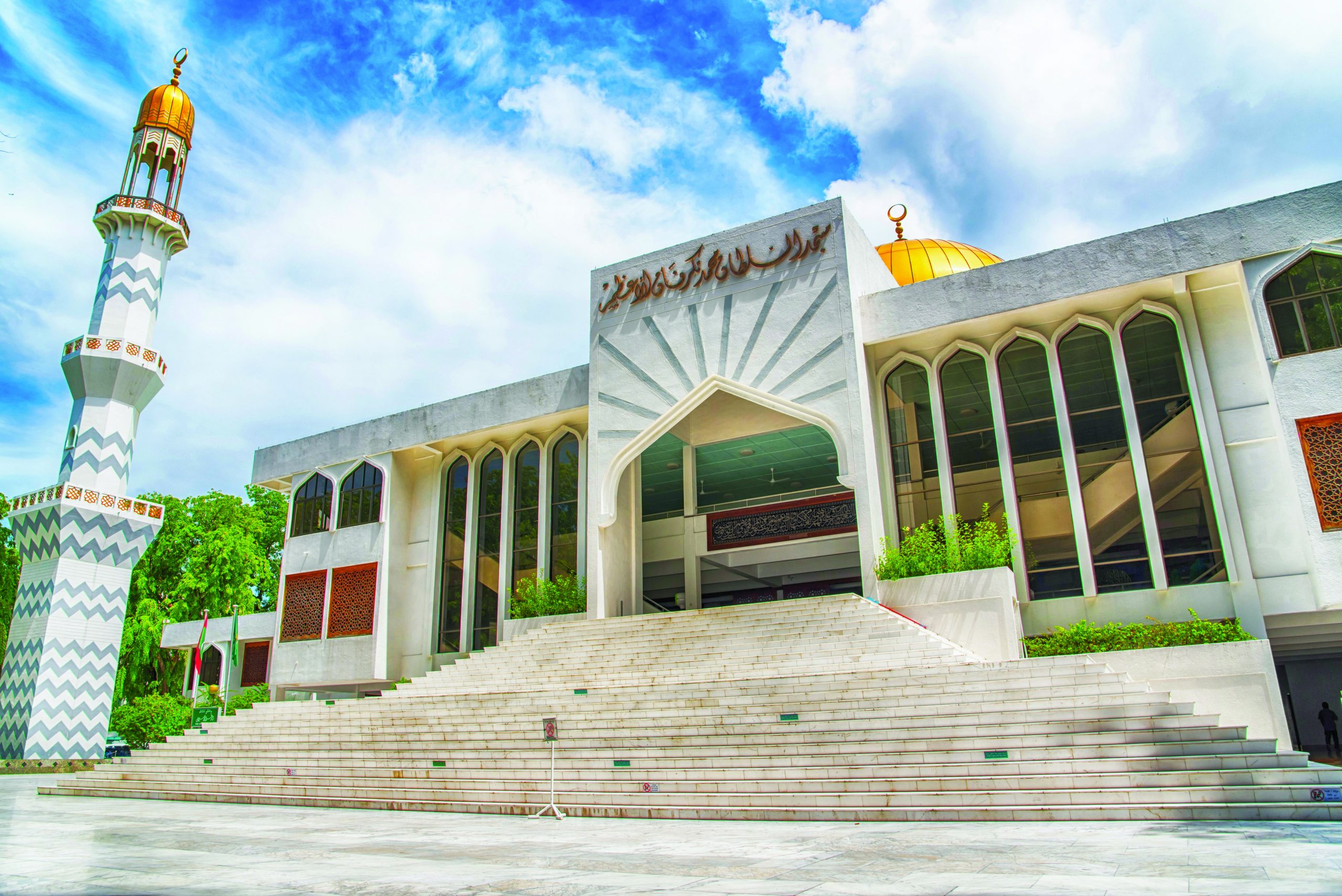
Male, Maldives – June 8, 2017: Mosque Islamic Centre – Masjid-al-Sultan Muhammad Thakurufaanu Al Auzam of Male on June 8, 2017 in Male, Maldives
The result is a unique environment where visitors can freely roam tiny islands in swimwear, almost like it is privately owned. Resorts in the Maldives woo tourists with promises of beaches and balmy evenings, azure skies and turquoise lagoons. The beach is the main focus for scuba divers, windsurfers and underwater sports enthusiasts, who throng to the atolls to explore its fabulous reefs and wealth of marine life. This is definitely not a destination for low budget backpackers or amateur anthropologists travelling independently and adopting native lifestyles. In fact there is little or no contact between the tourists and the local population, except in the tea stalls and tourist shops of Male.
The Maldives is perhaps best known worldwide as a diver’s paradise. Spectacular dive sites coexist with high-quality accommodation and excellent service, making them among the most highly rated worldwide. The unique beauty of the Maldivian underwater world is doubly appreciated by divers because of high visibility (sometimes even at depths of 50 metres), multitude of exotic marine fauna and flora, and warm waters (25-30oC) throughout the year.
Fish Head Dive aka Mushimasmin-gali Thila, is one of the world’s finest dive sites. Its steep sides are spectacular, with multi-level ledges, overhangs and caves supporting sea fans, anemones and black coral. The fish life includes fusiliers, large napoleons, barracuda, and much- prized grey reef sharks.
Spectacular submarine locations apart, the islands offer a world of other leisure activities — windsurfing, catamaran sailing, canoeing, water skiing, wake-boarding, ringo-riding, banana-riding, submarine-diving, jet-skiing, badmintion, and beach volley ball. If none of these appeal to you, just laze around and gaze at clear blue skies while surrounded with fragrant bougainvillaea, frangipani and hibiscus flora or get a relaxing rub-down in one of the spa resorts which distinguish the group of islands. Among the finest in the world, each resort combines the highest standards of luxury and service with seductive spa treatments for good health and indulgence.
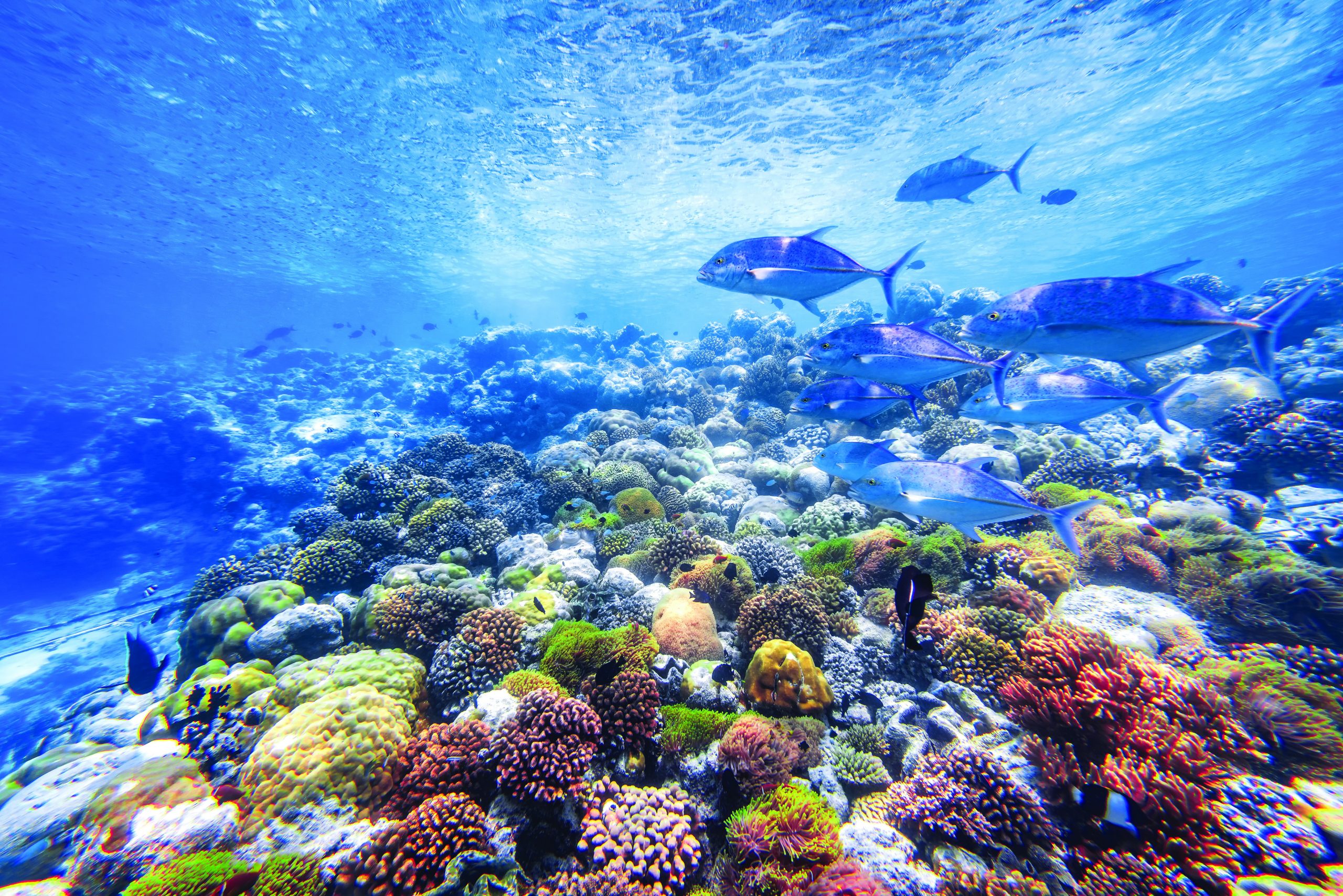
Maldives submarine snorkeling diving watching underwater life fish coral underwater photography
Getting there. No prior visa is required to enter the Republic of Maldives. Entry permits are issued on arrival at designated ports of entry, based on immigration requirements. The largest airport is Hulhule, which is about 30 minutes by air from Trivandrum and 45 minutes from Cochin. Several airlines offer direct flights to Hulhule from major Indian metros including Bengaluru, Chennai, Mumbai and Delhi.
With the onset of the Covid-19 pandemic second wave, the ministry of tourism, had from May 13, 2021 suspended the issuance of tourist visas for travelers from South Asian countries, including India. However with the number of cases subsiding, Maldives has begun issuing on-arrival tourist visas starting July 15, 2021. But visitors to the Maldives are required to produce a negative RTPCR test. Some islands also require tourists to remain in quarantine on arrival.
Accommodation. With the delicate coral reef and ecosystem endangered by mass tourism, the official policy of the Maldives is to deliberately encourage high-end tourism. However, some mid-priced accommodation is available (see box).
Accomodation options. Bandos Maldives. Sited in the North Male Atoll, just 20 minutes from Hulhule airport, Bandos Island Resort offers restful stretches of sandy white beaches and an accessible house reef, a mere 40-60 metres from the beach. A favoured destination of divers and big game fishing enthusiasts, the resort is equipped with babysitting, child care, kids club and medical facilities to encourage family holidays. Price: US$94-174 (twin sharing per night)
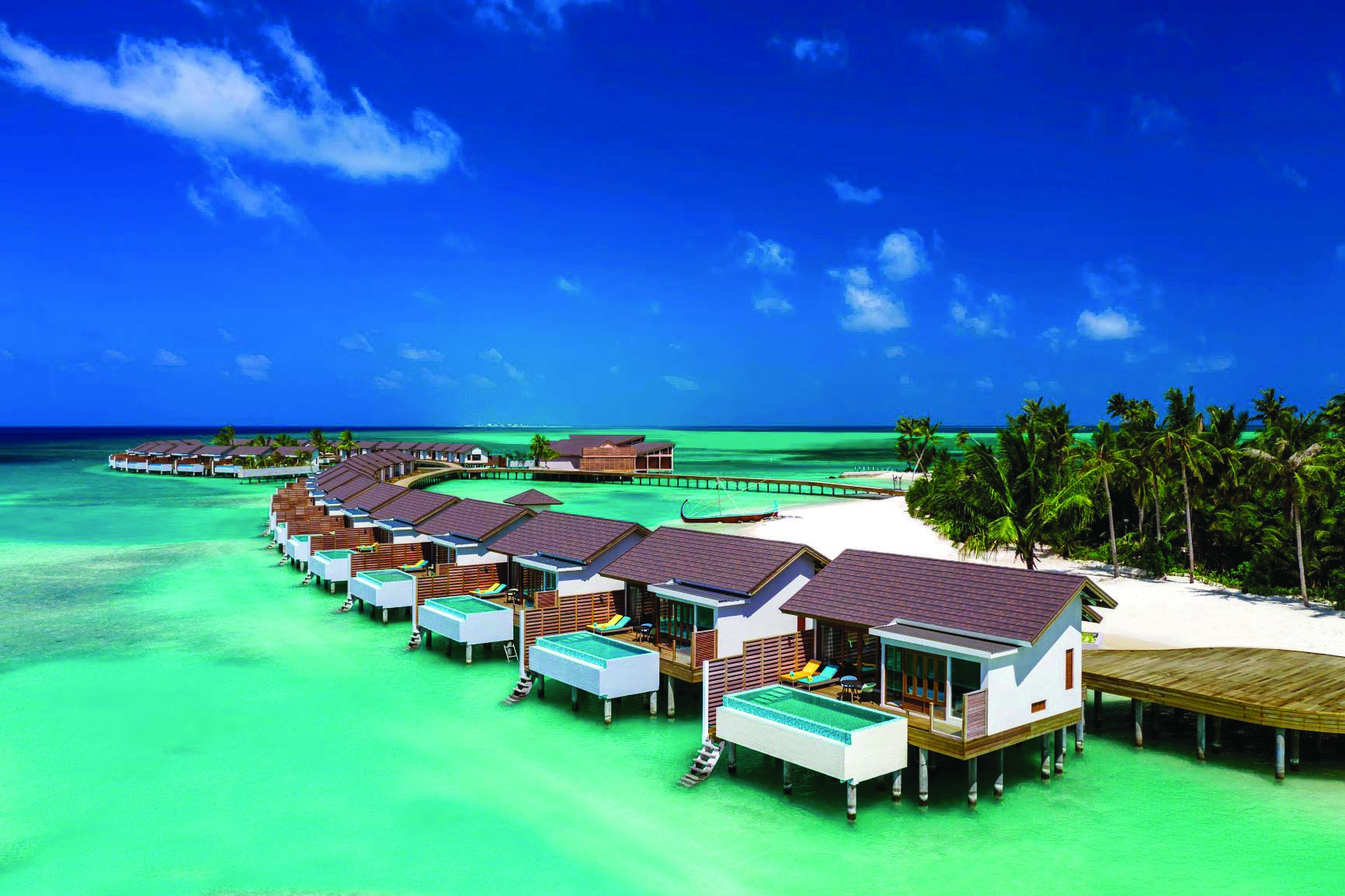
Angsana Valavaru. Set in the Dhaalu Atoll, Valavaru has several dive sites, reefs and islands which are virtually untouched. This unspoilt, palm-clad island with a crystal-clear turquoise lagoon, offers a pleasant antidote to city-weary tourists. The sea around is replete with colourful fish darting in and out of stunning coral gardens. Valavaru in Dhiveli translates into Turtle Island. Price ($497-1,827)
Meeru Island Resort. Located on the easternmost tip of North Male Atoll, Meeru Resort is a 22 minute speedboat ride from the airport. Large by local standards, much of the island remains untouched, with its natural vegetation intact. It is prized for its clear waters, rare greenery, and relaxed ambience. The island resort has one of the biggest dive schools in the Maldives, and its remote location in the Male Atoll gives it proximity to the best dive sites here. An array of water sports are also on offer. Price ($308-630)
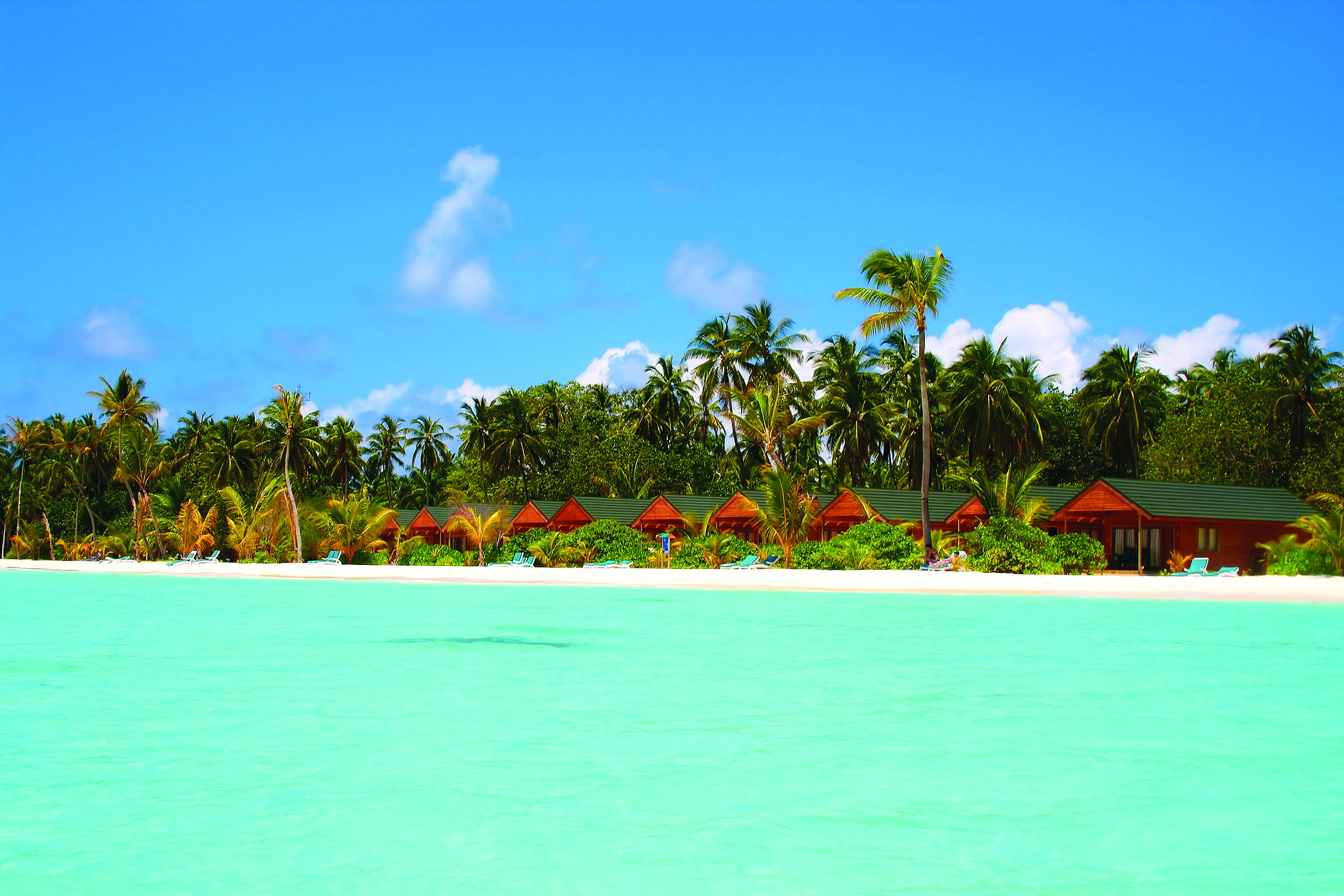
Meeru Island
Vakarufalhi is a well-maintained resort sited on a small island with a perfect beach encircling it. Much of the lagoon around Vakarufalhi is shallow, clear and sandy, but the reef edge is not far away. So whether you fancy swimming, sunbathing, or snorkelling around the house reef, it’s all at your doorstep. Windsurfers and catamarans can be used in the lagoon at high tide. The island is situated at the edge of the atoll’s most popular channel for diving. ($150-220).
Sun Islands Resort and Spa. Sited on the lush island of Nalaguraidhoo, this resort is surrounded by exotic tropical flowers and eye-catching greenery. Located 90 km from Hulhule airport, Nalaguraidhoo is perhaps the most picturesque island in South Ari Atoll and has excellent leisure, sports and recreational facilities with state-of-the-art equipment. These include floodlight tennis, basketball, volleyball, electronic games, squash, indoor badminton, table tennis etc. There’s plenty of aquatic action — scuba diving, windsurfing, catamaran sailing, canoeing — as well. ($214-405 per night)
Huvafen Fushi. Located in North Male Atoll, Huvafen Fushi is an exciting 30-minute speed boat ride from Male International Airport. Set within its very own lagoon, Huvafen Fushi is a naturalist’s paradise offering stunning vistas above and below the waterline. ($658-3,924).
Taj Coral Reef Resort. Nestled in a pristine, natural setting, it is a perfect destination for romantics, honeymooners, and special occasion guests who yearn for tranquility and privacy. Diving aficionados can look forward to discovering over 600 species of exotic fish, and numerous dive sites, including a house reef with its own shipwreck! ($375-1,800)
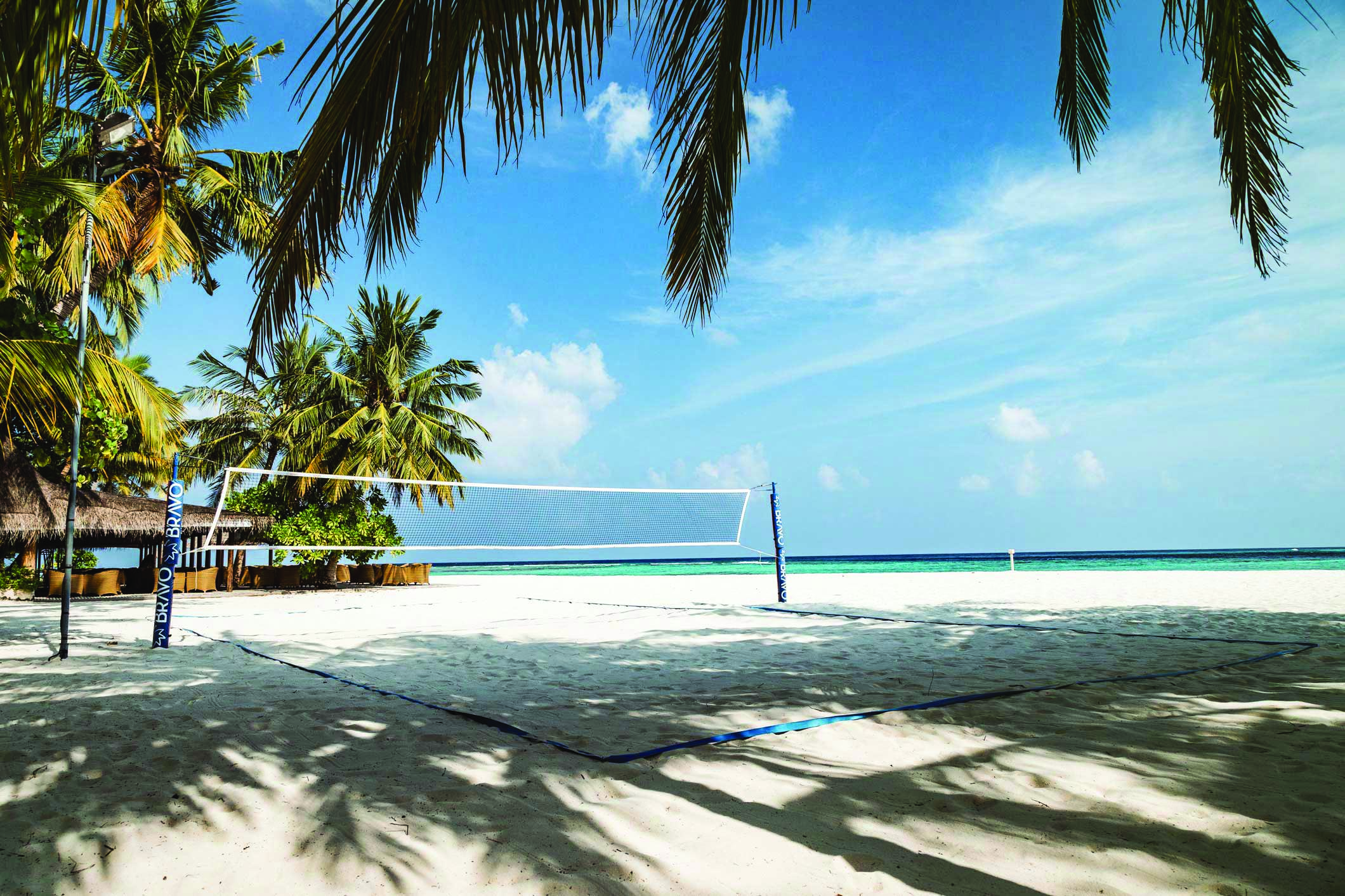
Taj Exotica Resort & Spa. This exclusive island resort is naturally endowed with verdant tropical plants and encircled by clear blue waters of one of the largest lagoons of the Maldives. The resort’s authentic Indian Jiva Grande Spa offers a range of wellness experiences. The resort is 150-minutes by a private luxury speedboat, available 24 hours, from Hulhule International Airport. ($750-2,000).
Angaga Island Resport and Spa Maldives. Located in the heart of Ari Atoll on an island which is over 42,000 squate kilometers, the resort is located 84 km from Male Airport and can be reached by a spa plane in 25 minutes. The resort is famous for an award winning Dive Centre with over 30 dive sites around the island. This is considered one of the best spots for spotting Whale Sharks around the year. (Price: US$ 214-295).
Radisson Blu Resort Maldives. This pristine resort offers an array of fine-dining options, with options of both local and international cuisine, a poolside bar or bench bar, a spa, a yoga pavilion for yoga enthusiasts and also an in-house gaming room. Located at 15.3 km from Villa International Airport, it is also at close proximity to the Dhigurah and Maamigili islands. Price: (US$529)
Also Read: Nagaland: The Edge of India

















Add comment